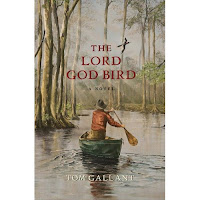-------------------------------------------------------------
For any who may be interested, someone named John Deamond has pieced together this video of various IBWO-related clips (there seems to be no accompanying audio). The first minute-or-so are some very quick clips, mostly zoomed, that have made claims of showing IBWOs (some from YouTube, some from Mike Collins, 1 from Geoff Hill's group). The next 11 minutes are various replayings of the Luneau clip from Arkansas, and the last minute is some superfluous animation:
I don't find anything distinctly helpful or new here, but pass it along in the event others may wish to play with it. Also, don't know any particulars about John's project beyond his own statement that it is "...about extinct birds and how the events surrounding and following their
demise reflect issues with how we deal with the natural environment."
-------------------------------------------------------------





